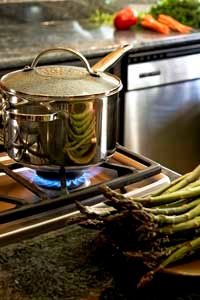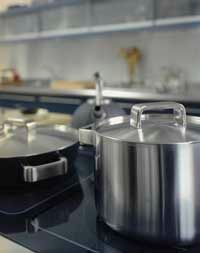We burn up to a third of our total household energy in the kitchen and laundry room [source: U.S. Household Electricity Report]. This happens because heavy-duty appliances such as washers, dryers, refrigerators, and dishwashers siphon considerable amounts of power to operate on a daily basis. As a result, many people who wish to reduce their carbon footprint (not to mention their utility bills) debate which consumes less energy: the electric vs. gas stove.
Interestingly, stoves don't get as much attention as, say, power-hungry fridges, for burning up household energy. Even Energy Star, the U.S. government's measuring stick for consumer goods' greenhouse gas emissions, does not mandate energy use standards for these culinary monoliths. In this article, we'll compare gas and electric stoves against induction cooktops, sharing how you can save money while reducing your energy consumption.
Advertisement


